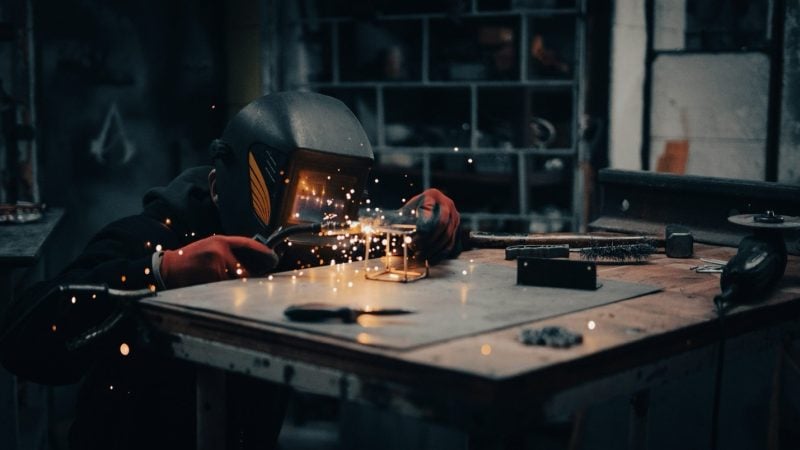Inside the Studio: How Designers Are Crafting the Perfect Metal Table Legs

Step inside any modern design studio, and you’ll likely find more than sketches and blueprints. There’s a fusion of art and engineering taking place, especially when it comes to metal table legs. Once a utilitarian afterthought, these components are now treated as sculptural elements that can redefine an entire piece of furniture. Crafting the perfect set of metal table legs isn’t just about functionality—it’s a creative journey that combines vision, craftsmanship, and precision. In today’s furniture design world, metal legs are more than just supports; they’re statements of identity and style.
Where Art Meets Function in Furniture Design
In the past, table legs served a purely structural role. Today, they are integral to a piece’s aesthetic and design language. The new generation of furniture designers is embracing the potential of custom metal table legs to serve as focal points. Whether minimal and sleek or industrial and bold, the designs are intentional. A distinct shift toward blending strength with elegance allows designers to explore bold silhouettes, daring angles, and eye-catching finishes that transform the ordinary into something truly extraordinary.
From Concept to Creation: The Designer’s Workflow
The creation process starts with an idea but must be translated into reality through careful planning. Designers begin by sketching out concepts, paying close attention to how the table legs will interact with the overall form of the furniture. The proportions, height, and angles must all align perfectly to support not just the tabletop, but also the design integrity of the piece. Many studios utilize 3D modeling software to simulate the finished product before any physical material is cut. This step ensures that both balance and beauty are achieved.
Material Selection: More Than Just Steel
While steel remains the most commonly used material for its strength and versatility, modern studios are pushing boundaries with other metals such as brass, aluminum, and mixed metals. Each type offers a distinct character, brass brings warmth and vintage appeal, while powder-coated aluminum can create a sleek, contemporary vibe. The finish also plays a key role. Whether matte, brushed, polished, or distressed, it impacts how the metal table legs reflect light and complement the surrounding design.
Welding and Fabrication: The Hands Behind the Art
No matter how advanced the design tools get, much of the work still comes down to skilled hands. Experienced fabricators bring designs to life using techniques like TIG and MIG welding, grinding, and precision bending. Their craftsmanship ensures that each leg is structurally sound and visually flawless. The process is meticulous, requiring patience and acute attention to detail. In the fabrication stage, the artistry becomes tangible, and raw metal transforms into a functional sculpture.
Balancing Strength with Style
Designers constantly face the challenge of balancing visual lightness with actual load-bearing capability. A table leg must be strong enough to support weight and withstand everyday use, yet it should also look elegant and cohesive. Through clever engineering, like hidden reinforcements, internal bracing, or weight-distributing geometries, designers create metal table legs that defy traditional expectations of what a support structure should look like. This balance is crucial to maintaining the harmony of the final piece.
Customization as a Core Design Principle
More studios are now offering bespoke design services, tailoring metal table legs to their clients’ unique vision. This level of personalization allows for creative freedom not just in size, but in style, texture, and finish. Whether it’s a rustic industrial table for a loft or a minimalist base for a high-end conference room, designers use metal legs to interpret and reflect the character of a space. Customization isn’t just a luxury, it’s becoming a standard.
Influences from Architecture and Nature
Interestingly, architectural forms or organic shapes inspire many metal leg designs. You’ll find legs that echo the sharp lines of modernist buildings and ones that mimic tree branches, roots, or even water flow. These inspirations lend a sculptural quality to the legs, turning them into miniature installations within a room. This architectural influence elevates the functional element into an object of admiration, giving a new meaning to structural elegance.
Sustainability and Smart Design Practices
With growing attention on sustainability, designers are rethinking how they work with metal. Many studios now use recycled or reclaimed metal, low-VOC coatings, and eco-friendly fabrication techniques. Durability is also a major part of sustainable design, metal table legs are built to last decades, reducing the need for replacement and minimizing environmental impact. Some designers even build modular legs that can be swapped or updated over time, offering a fresh take without replacing the entire table.
What Makes a Table Leg “Perfect”?
Perfection in design is subjective, but when it comes to metal table legs, it’s a blend of proportion, materiality, and emotion. The leg must speak to the personality of the table it supports, fit seamlessly within the intended space, and evoke a sense of purpose. It must feel like it belongs, neither too loud nor too subdued. The perfect table leg doesn’t just hold up a surface; it elevates the entire furniture experience.
Behind every beautifully crafted table is a design studio where vision, talent, and metal converge. The artistry in creating the perfect metal table legs proves that even the smallest components can carry the weight of innovation. These legs don’t just support, they transform, redefine, and inspire. In the hands of today’s designers, the humble table leg has become a powerful expression of creativity, craftsmanship, and design integrity.





